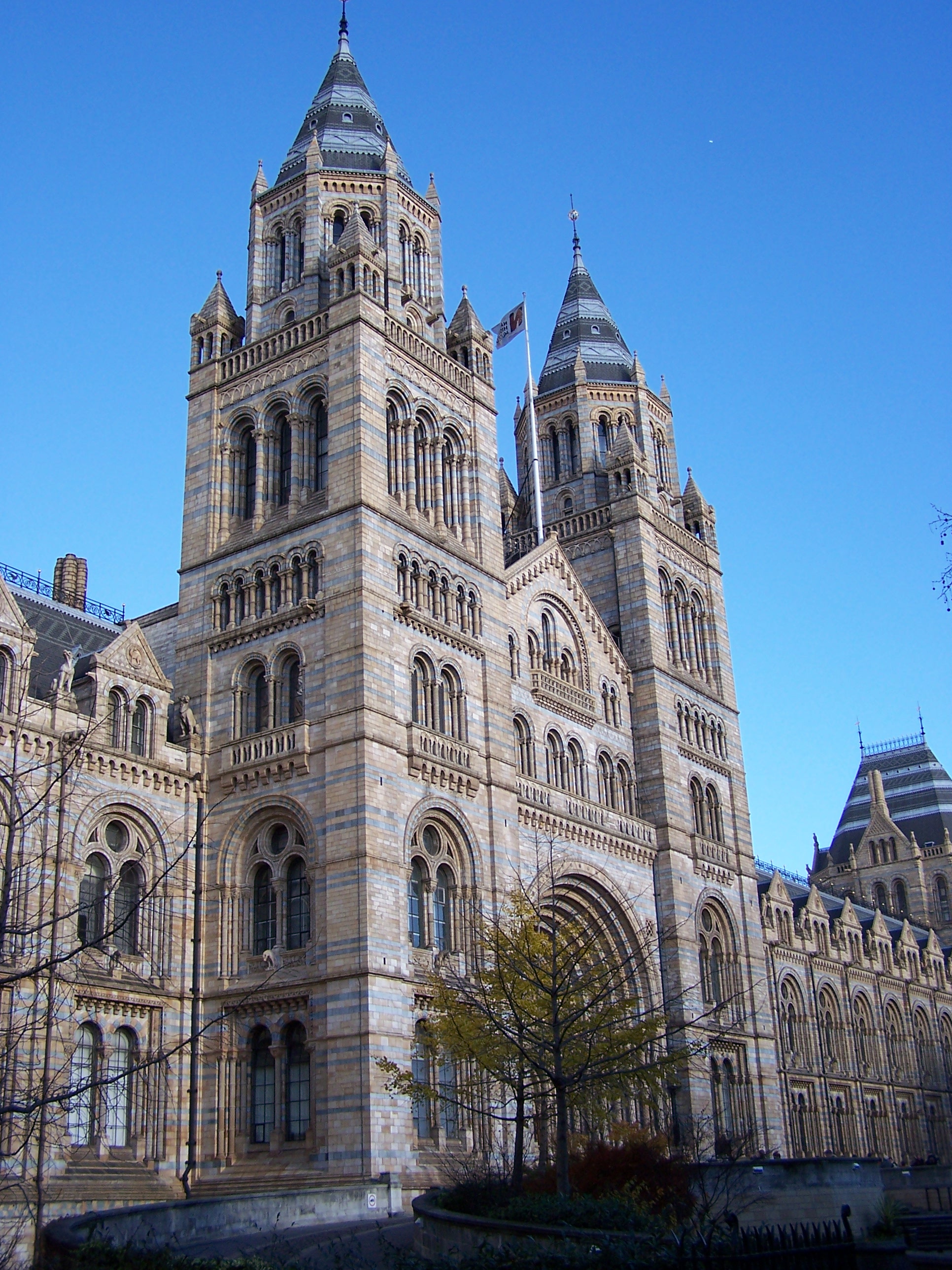Location: Natural History Museum, London
This visit to the Natural History museum was the first such visit for over a decade for the author, and as such, not only were a few of the galleries reviewed, unintentionally, but there are more plans to try and give a complete overview of the museum in subsequent visits.
First impressions are one of the museum's strongest, the large building stretching out where one stands at the front, exquisite architecture over the entire facade, especially featured are round arches over the doors and every window. The building is composed of sandy coloured bricks, interspersed by patterns of grey bricks. The location itself is memorable, situated in one of the most affluent areas of London, by South Kensington station, and adjacent to both the Science museum, and the V & A museum.
The review, situated on the east side within a newer extension of the main building, is in the red zone, and begins with the gallery “Visions of Earth”, opens on a room with six statues lining a corridor through; Some notable ones being Zeus, who had a selection of hand-axes to illustrate the first humans in Europe around 400 000 years ago, Medusa, the aspect of petrification with a selection of petrified life as the ancient greeks would have seen, including a large fossil, and a cyclops, highlighted that the origins of which would have been from the skull of a Mastodon.
The walls of the room are lined with small 'peep-holes' containing examples of gemstones and other interesting rocks, as well as some explanation of their use and perceptions by humans. Through the middle of all this, an escalator goes up, through the middle of a large metal structure of the globe, humourously playing metal music inside, and leading onwards to more connected galleries including the “Restless Surface” and the “Power Within”, all giving a view in to the massive range of expressions that show how dynamic the surface of the Earth is.
After the escalator, one is greeted with a dark room, and side exhibits leading the visitor through, first showing some large rocks and how they were formed by the simplest of geological forces as a set of adjectives, 'forcing', 'squeezing', 'shattering', and more. Next was an exhibit highlighting the number of volcanoes and earthquakes around the globe, a screen shows the number of recent earchquakes and their magnitudes, to a series of images, showing the Earth's continents as they were 250 million years ago, today, and in 250 million years in the future.
The next area began with showing the eruption of Mount Pinatubo in the Philippines, and the resulting effects on the local people, including the death toll of 800 people despite an evacuation prior to the eruption. Moving further in, there was a range of displays of the different types of lava and their solidified forms, including the well known runny lava flows, pahoehoe, and the incredibly delicate looking Pele's hair. Many more besides, it shows the range of types of rock and volcanic glass formed from various types of eruptions.
| Spray of pahoehoe lava. | Pele's hair |
This leads in to another dark room, a circular area with the center filled out by a statue of a magma core that form below volcanoes. Round this is a summary of the internal workings below the surface that precede volcanic eruptions, and around this, are other examples of volcanoes that impacted on humans, from Mount St. Helen's, Mount Pelee in the Caribbean, and Mount Vesuvius.
Moving on, one eventually comes to a section on earthquakes, with a summary of how they are caused, along with an illustration of the Richter scale, and even a vibrating room to demonstrate the effect of the Kobe earthquake.
The rest of the exhibits trail on through a variety of other displays of geological forces, moving to surface level weathering forces such as wind, water, ice, and the chemical weathering forces. Here a lot of time can be spent with the variety of attractions, displays of rocks, and a plethora of images and television screens.
This was an excellent tour, with plenty of tactile and visual attractions that appeal to both children and adults to educate one in the vast range of forces and effects that the Earth displays, ranging from the passive sedimentation and compaction forces, tectonic shifts, to the more violent shows of volcanic eruptions and earthquakes. This is by no means a comprehensive guide, and only half has been given in the review above. For the lone visitor, the weekend is a better choice in order to avoid the numerous children on school trips that might otherwise be busying themselves around the attractions.
Images yanked from the Natural History Museum, from Wikipedia and from another blog: Lovingthebigisland's











No comments:
Post a Comment